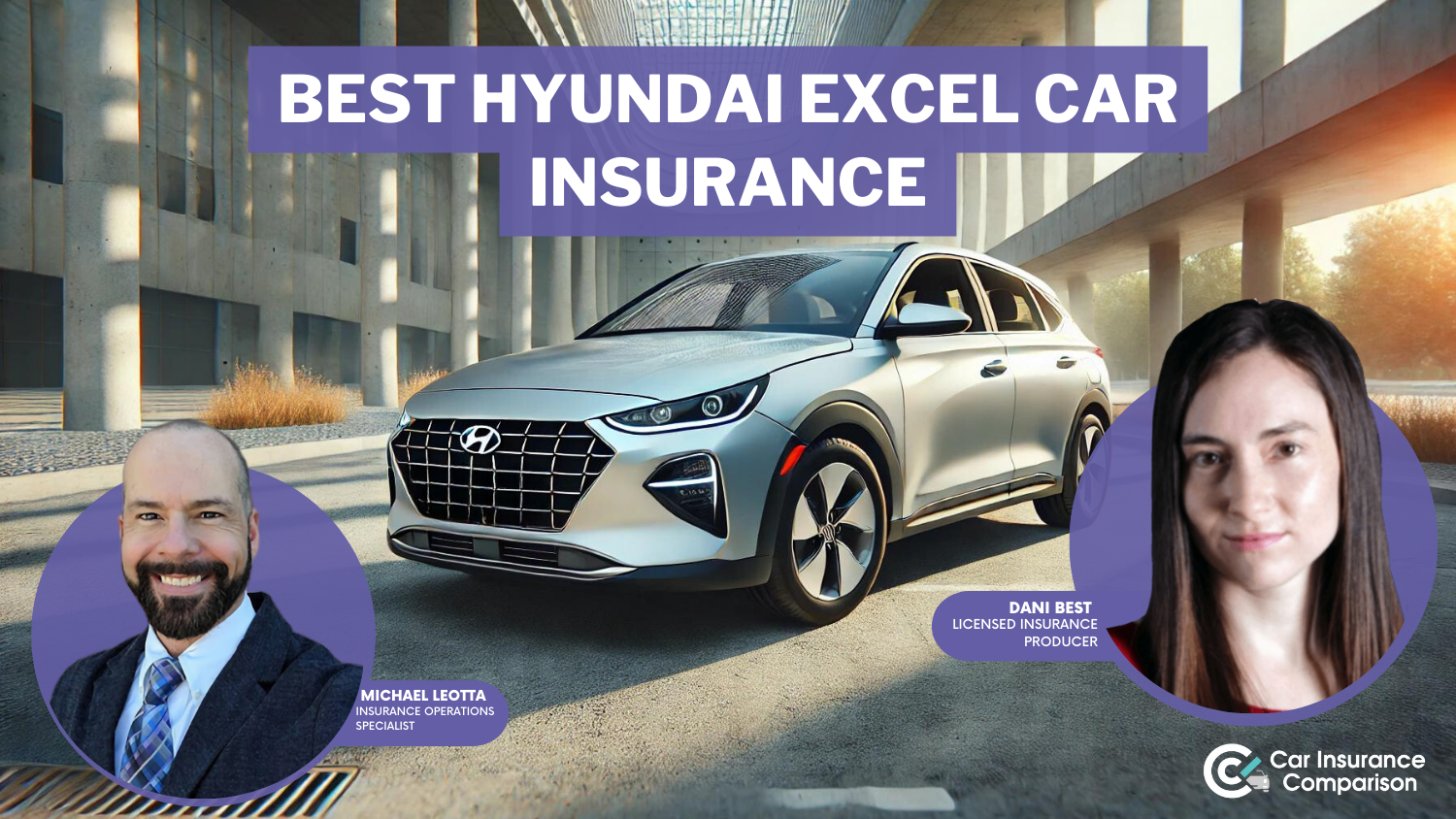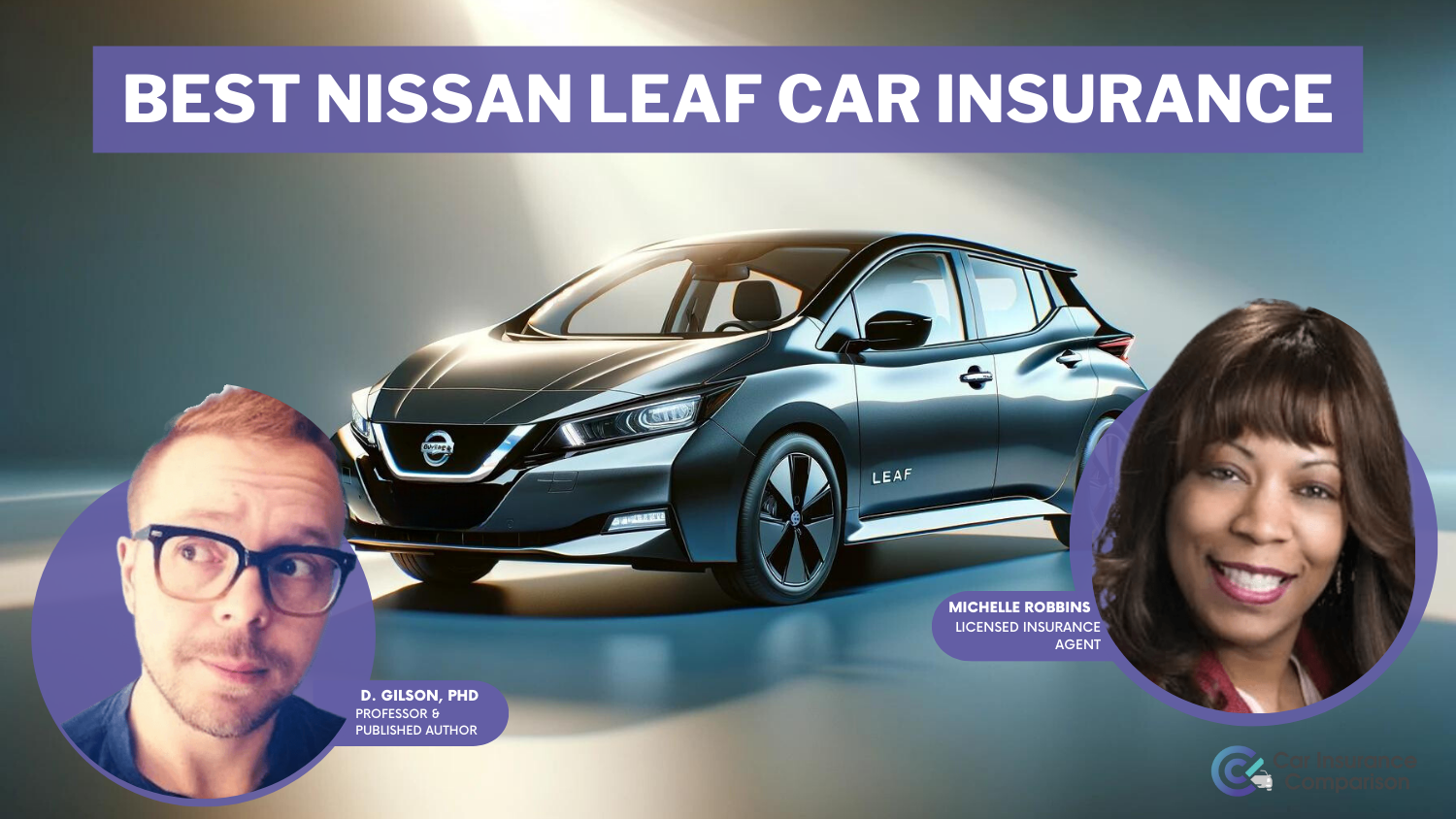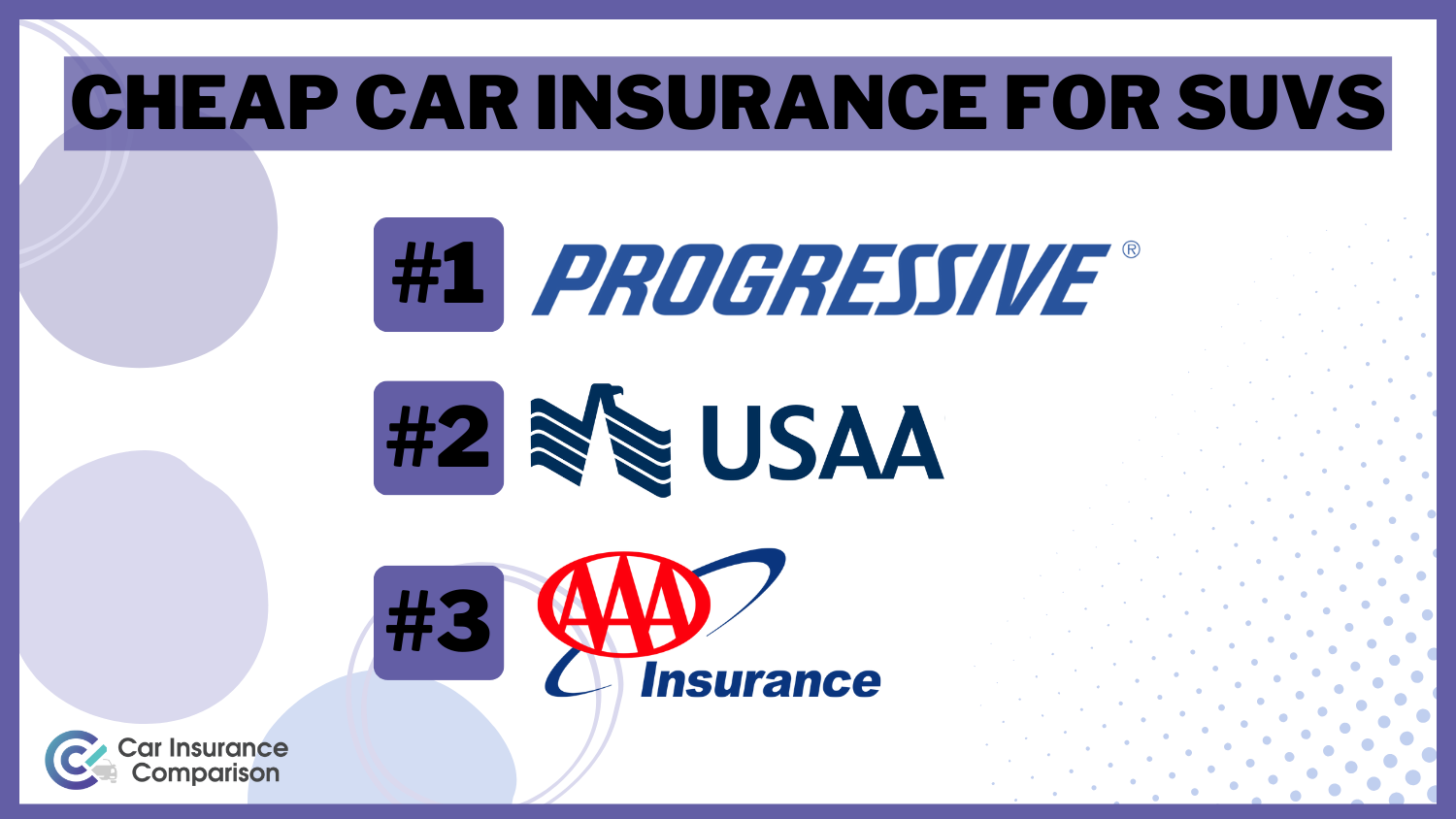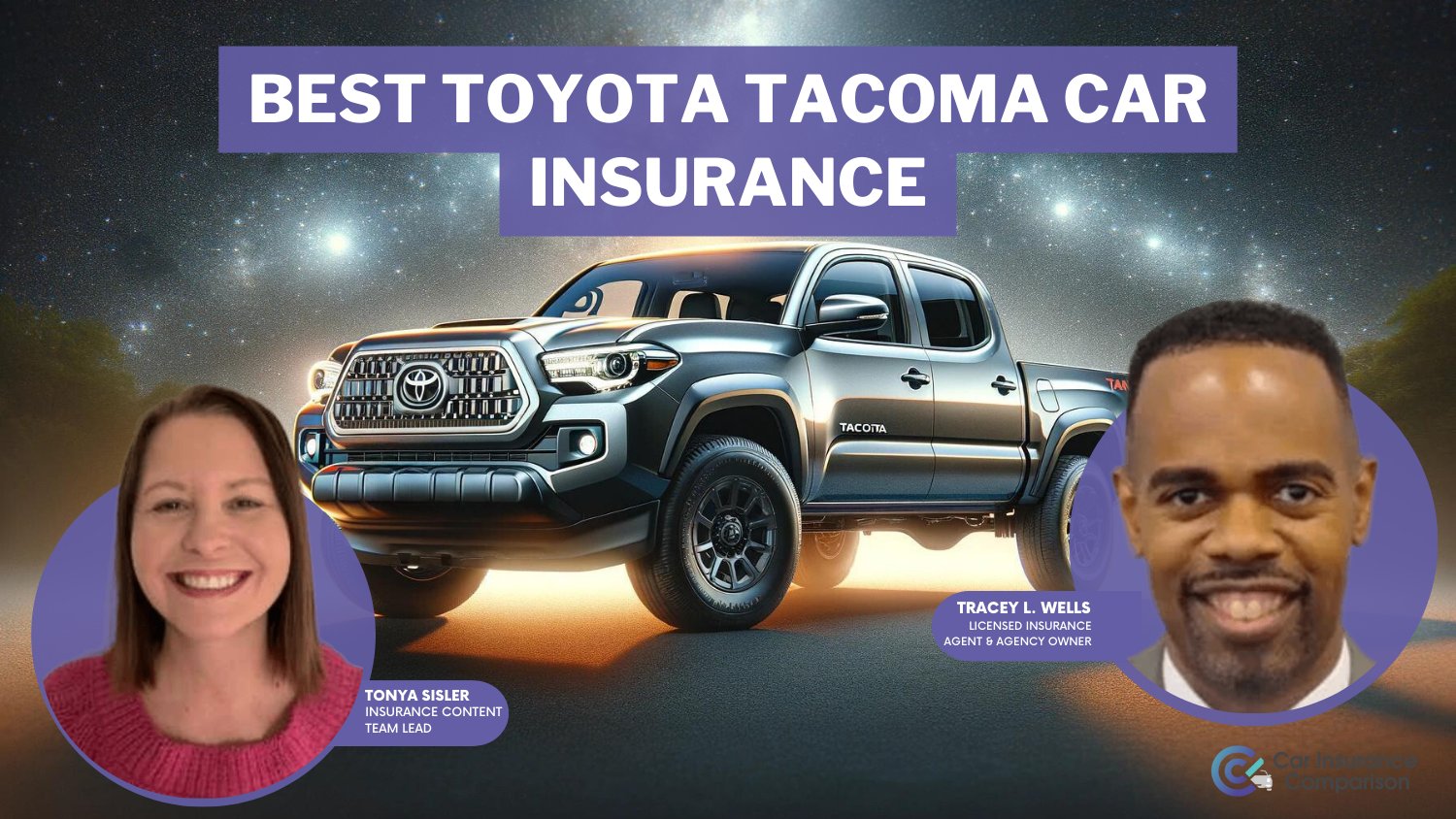Compare Four-Wheel Drive vs. Two-Wheel Drive Car Insurance Rates [2025]
When it comes to insurance premiums for four-wheel drive vs two-wheel drive, 4WD car insurance rates are often higher because insurers view these vehicles as high-risk when compared to front-wheel and rear-wheel drive vehicles. Enter your ZIP code for a 4WD car insurance quote or a 2WD car insurance quote and find excellent auto insurance rates from top car insurance companies.
Read more Secured with SHA-256 Encryption





Table of Contents
Table of Contents


Insurance Content Team Lead
Tonya Sisler has been a technical insurance writer for over five years. She uses her extensive insurance and finance knowledge to write informative articles that answer readers' top questions. Her mission is to provide readers with timely, accurate information that allows them to determine their insurance needs and choose the best coverage. Tonya currently leads a team of 10 insurance copywrite...
Tonya Sisler


Commercial Lines Coverage Specialist
Michael Vereecke is the president of Customers First Insurance Group. He has been a licensed insurance agent for over 13 years. He also carries a Commercial Lines Coverage Specialist (CLCS) Designation, providing him the expertise to spot holes in businesses’ coverage. Since 2009, he has worked with many insurance providers, giving him unique insight into the insurance market, differences in ...
Michael Vereecke
Updated January 2025
Insurance Premiums for Four-Wheel Drive Vs Two-Wheel Drive Summary
| Drivetrain Type Summary | Details | Source |
|---|---|---|
| 4WD, FWD, and RWD | Drivetrains are systems that provide power to all 4 wheels or 2 wheels. | Popular Mechanics |
| Insurance rates are impacted by varying factors | A few of the things that impact rates are: the safety rating of an individual car; the types of drivers that typically purchase said car; how much it would cost to replace the vehicle | Quadrant Data |
| Vehicle insurance | Small SUVs are cheaper to insure than large sedans | American Automobile Association (AAA) |
| 4WD vs. FWD insurance rates | 4WD vehicles have slightly higher rates | Quadrant Data |
Thinking about getting a new four-wheel-drive vehicle? The type of car you drive affects how much you’ll pay in car insurance premiums. What is car insurance? A contract between you and the insurance company that protects you against financial loss in the event of an accident or theft.
Knowing about different cars, you might be wondering if there’s a difference in insurance premiums for four-wheel-drive vs two-wheel-drive or between front-wheel drives (FWD), rear-wheel drives (RWD), and that new four-wheel drive (4WD) vehicle you want.
Because 4WD cars tend to be trucks and SUVs and FWD vehicles tend to be sedans and coupes, it’s hard to compare the two. But in terms of insurance rates, the 4WD insurance comparison is clear.
Let us help you get a better understanding of how these differences in your car’s drivetrain will impact your car insurance rates. If you’re searching for the difference between insurance premiums for four-wheel drive vs two-wheel drive, check out our free rate comparison tool above.
Four-Wheel Drive vs. Two-Wheel Drive
So what is the four-wheel-drive vs. two-wheel-drive difference? When we talk about FWD, RWD, and 4WD vehicles we are simply referring to a vehicle’s transmission. Popular Mechanics gives a good breakdown of how transmissions work and what the different drivetrains do. The comparison is really four-wheel drive vs. two-wheel.
The brief video below gives a basic overview of the differences between these drivetrains.
In an FWD car, it’s the front wheels of the vehicle that cause it to move. Those wheels receive power directly from the motor without a complicated transmission system. Many passenger cars today have an FWD system.
The RWD system was the standard for American cars up until the mid-1980s. With this type of setup, the rear wheels are connected to the engine through a long transmission system running from front to back, and they put the car in motion. This drivetrain is most common in many performance type vehicles today.
Four-wheel driving vs. two-wheeler (two-wheel driving) is basically the same if you’re driving around town. 4WD vehicles are capable of having all four wheels driven by the motor simultaneously.
“Capability” is an important designation due to the fact that many 4WD vehicles only use it on when needed. Vehicles with AWD (All Wheel Drive) systems power both the front and rear wheels all the time. AWD vs 4WD is just the difference between all four wheels being powered full-time or part-time.
What is the difference between AWD and 4WD vehicles in terms of insurance? AWD insurance will be similar to 4WD insurance. Are 4×4 vehicles more expensive to insure? The short answer is yes — only because of all the moving parts and the higher possibility of something needing repair.
This drivetrain is usually found in rugged trucks and SUVs. It can impact rates, as your insurer will look at the cost to repair the vehicle as well as the risk considering the capabilities of this type of car.
Is 2WD or 4WD better? That depends on the individual driver and their needs.
Free Insurance Comparison
Compare Quotes From Top Companies and Save
Secured with SHA-256 Encryption
2WD vs 4WD Insurance
In most states, you’ll be required to insure your vehicle with minimum liability coverage. What is just liability car insurance — the minimum car insurance you can buy? It means you’ve purchased the state-mandated amount of insurance coverage.
Outside of that, you may also be required by your financial institution to carry full coverage if you’re financing the vehicle. What is full auto insurance coverage? Full coverage auto insurance includes liability coverage, comprehensive coverage for non-collision damages, and collision coverage for at-fault accidents.
Different cars have different insurance rates, and understanding what factors shape premiums will help you when deciding which car to purchase. Several factors impact insurance rates, including:
- The safety rating of the car being insured
- The types of drivers that typically purchase said car
- How much it would cost to replace the vehicle
The video below goes into a little more detail about what impacts your insurance rates.
These factors are all part of a complicated formula that insurance companies use to determine individual rates.
AAA’s Your Driving Costs study looked at the average annual costs associated with different types of vehicles. The study determined that the cheapest type of car to insure was a “small SUV,” and the most expensive was a “small sedan.” The cheapest SUV to insure would be in the class of a Toyota RAV4.
Take a look at the data below for an overview of the annual cost of several vehicle types.
Average Annual Car Insurance Rates by Vehicle Type
| Vehicle Type | Average Annual Car Insurance Rate |
|---|---|
| Small SUV | $1,074 |
| Medium SUV | $1,102 |
| Minivan | $1,114 |
| Hybrid | $1,200 |
| Large sedan | $1,209 |
| Electric | $1,215 |
| Medium sedan | $1,232 |
| Pickup truck | $1,242 |
| Small sedan | $1,315 |
Are 4×4 vehicles more expensive to insure? It’s hard to say how much 4WD vs. FWD will impact your insurance costs. A 4WD system is more complicated than a FWD system and would cost more to repair, meaning that a vehicle with 4WD, in general, will cost more to insure. But that being said, each vehicle has different variables that will impact insurance.
Looking at insurance rates by car will give you a good idea of what you might pay.
Let’s take a look at some specific vehicles and how they might reflect the rates you can expect for vehicles with different drivetrains.
Liability Car Insurance Rates
Liability insurance is an essential part of almost every car insurance policy. In setting liability rates, insurance companies look at the data related to the losses associated with bodily injury.
This mandated coverage pays for any injuries you cause to other drivers. There are various levels of coverage limits and most states have certain minimum requirements, but you can pay more and opt for better coverage.
Property damage liability pays to repair or replace vehicles and valuables damaged in an accident you cause.
Bodily injury insurance is also part of the required minimum liability insurance in most states. This is coverage that helps you pay for another person’s injuries in a car accident for which you are found to be at fault.
Liability Rates for Vehicles
| Vehicle Make and Model | Average Annual Liability Insurance Rates |
|---|---|
| Ford Fusion | $336 |
| Toyota Camry | $356 |
| Ford F-150 4x4 | $372 |
| Toyota 4Runner 4x4 | $376 |
| Jeep Wrangler 4x4 | $420 |
The table above shows that liability rates differ between 4WD vehicles and FWD vehicles. While other factors such as MSRP and driving history will impact your rates, the drivetrain of the Jeep, 4Runner, and Ford F-150 seems to inflate their rates. The Toyota Camry and Ford Fusion are both FWD vehicles and lack the capabilities that the others have. They see slightly lower rates.
There are exceptions to the rule, however, as this is not standardized. The FWD Honda Civic, for instance, sees higher insurance rates. Why is Honda Civic insurance so high? The Civic boasts higher performance and a higher MSRP.
Comprehensive and Collision Car Insurance Rates
Comprehensive and collision coverage, combined with liability, is sometimes called “full coverage.” If you have a policy with each of these coverages, it will usually pay the total cost of an accident.
Should you find yourself in an accident, you’ll need collision insurance coverage to fix your car and help get you back on the road. What is collision coverage on car insurance? Collision insurance covers your vehicle if it’s damaged in an accident. This will also be required by your lender should you lease or finance your vehicle.
Collision insurance will pay to fix your vehicle should you be found at fault for an accident. The video below will explain a little more.
https://www.youtube.com/watch?v=jFDl_p3gHNk
Should something happen to your car other than an accident, your comprehensive car insurance coverage will help to make it good as new again. Comprehensive insurance is coverage that protects your car from damages resulting from events other than a collision.
This means it covers things like theft, vandalism, fires, and inclement weather damage. While this is an optional policy in many states, it will be required by your lender and will result in additional monthly insurance charges.
Averagae Annual Comprehensive Car Insurance Rates by Make and Model
| Vehicle Make and Model | Average Annual Comprehensive Insurance Rates |
|---|---|
| Toyota Camry | $308 |
| Ford Fusion | $326 |
| Ford F-150 4x4 | $342 |
| Toyota 4Runner 4x4 | $348 |
| Jeep Wrangler 4x4 | $380 |
The comprehensive rates data above goes further to demonstrate the difference between 4WD and FWD vehicles. 4WD vehicles are more expensive and usually require more equipment. Therefore these types of vehicles will usually have higher rates. The Wrangler, 4Runner, and F-150 are bigger vehicles and will prove to be a bigger liability to repair or replace.
The cost for these coverages will depend on things like the type of car, the value, and the risk associated with the vehicle. Your premiums will depend on how much it might cost to repair or replace the vehicle.
How Value Affects Car Insurance Rates
There is virtually no difference in 2WD standard drivetrain systems (FWD and RWD) from the standpoint of an insurance company. It’s only the difference between 2WD and 4WD that is significant. Are 4WD more expensive than 2WD?
4WD vehicles tend to be considerably more expensive than 2WD vehicles.
How much does a 4×4 cost? The Jeep Wrangler had an average MSRP of around $32,000 in 2020 while the Honda Civic had an average MSRP of around $22,000. The obvious difference here is that one is an SUV and one is a car. However, the drivetrain of the vehicles impacts the value of the car.
The Jeep is a 4WD that requires more rugged and expensive equipment because of its capabilities. The Honda isn’t designed for off-road driving and doesn’t require the same expensive equipment.
When you’re talking about collision and comprehensive insurance, it only makes sense that more expensive vehicles will garner higher insurance rates. That means that your 4WD SUVs and crossovers will be more costly to replace for an insurance company, so you will pay a higher rate for coverage.
Read more: Compare Jeep Car Insurance Rates
Car Insurance Claims and Losses
As we discussed, there are several things that impact insurance premiums. A big thing that insurers look at is the frequency of claims filed by vehicle owners. How often they have to repair or replace certain vehicle types can have an impact on what insurance companies charge to insure the vehicle.
What are the loss statistics on insurance claims for these vehicles?
Looking at claims and losses data across the spectrum for the Jeep Wrangler, Toyota 4Runner, Ford F-150, Honda Civic, and Ford Fusion, we can get a better understanding of premium rates for each vehicle.
Car Insurance Claim Loss Statistics by Make and Model
| Vehicle Make and Model | Collision Insurance Loss Percentages | Property Damage Insurance Loss Percentages | Comprehensive Insurance Loss Percentages | Personal Injury Insurance Loss Percentages | Bodily Injury Insurance Loss Percentages |
|---|---|---|---|---|---|
| Jeep Wrangler 4x4 | -43% | 11% | -24% | -37% | -3% |
| Toyota 4Runner 4x4 | -26% | -14% | -9% | -36% | -32% |
| Ford F-150 | -36% | 19% | -41% | -31% | 11% |
| Honda Civic | 14% | 35% | 39% | 32% | 28% |
| Ford Fusion | 5% | 13% | -9% | 26% | 25% |
The percentages for each category represent insurance losses compared to the average for all vehicles. The Jeep Wrangler had the best collision data and the Honda Civic had the worst. All vehicles performed well in the area of comprehensive claims with the exception of the Honda Civic. Overall, the Toyota 4Runner did the best among all cars compared.
This data shows a few of the factors that impact premium rates for each vehicle. It’s important to note that these numbers are reflective of vehicles in the same class. While it’s hard to compare the different types of cars, it adds another piece of the puzzle in figuring out how rates are determined for each vehicle.
Safety Ratings
Like most new car buyers, you rank probably the safety of a vehicle as one of your top priorities.
Vehicle Safety Technology keeps you and your passengers safe, and this has been one of the biggest areas of innovation over the history of car manufacturing. When determining auto insurance premiums, insurance companies will look at the safety of a vehicle. Many insurance companies even offer saftey-related discounts, as this table shows.
Common Car Insurance Safety Discounts Offered by Insurance Companies
| Discount Name |  |  | ||||||||
|---|---|---|---|---|---|---|---|---|---|---|
| Adaptive Cruise Control | ✓ | ✓ | ✓ | ✓ | 5% | ✓ | ✓ | ✓ | ✓ | ✓ |
| Adaptive Headlights | ✓ | ✓ | ✓ | ✓ | 5% | ✓ | ✓ | ✓ | ✓ | ✓ |
| Anti-lock Brakes | 10% | ✓ | ✓ | 5% | 5% | 5% | ✓ | 5% | ||
| Anti-Theft | 10% | ✓ | 23% | 20% | 25% | ✓ | 15% | |||
| Claim Free | 35% | ✓ | ✓ | 26% | ✓ | 10% | ✓ | 15% | 23% | 12% |
| Continuous Coverage | ✓ | ✓ | ✓ | ✓ | ✓ | ✓ | 15% | ✓ | ||
| Daytime Running Lights | 2% | ✓ | 3% | 5% | 5% | ✓ | ✓ | |||
| Defensive Driver | 10% | 10% | ✓ | ✓ | 10% | 5% | 10% | 5% | 10% | 3% |
| Distant Student | 35% | ✓ | ✓ | ✓ | ✓ | 10% | ✓ | 7% | ||
| Driver's Ed | 10% | ✓ | ✓ | ✓ | 10% | ✓ | 10% | 15% | 8% | 3% |
| Driving Device/App | 20% | 40% | ✓ | ✓ | 30% | 40% | 20% | 50% | 30% | 5% |
| Early Signing | 10% | ✓ | ✓ | ✓ | ✓ | 8% | ✓ | ✓ | 10% | 12% |
| Electronic Stability Control | 2% | ✓ | ✓ | ✓ | 5% | ✓ | ✓ | ✓ | ✓ | |
| Emergency Deployment | ✓ | ✓ | ✓ | 25% | ✓ | ✓ | ✓ | ✓ | ✓ | |
| Engaged Couple | ✓ | ✓ | ✓ | ✓ | ✓ | ✓ | ✓ | ✓ | ✓ | ✓ |
| Family Legacy | ✓ | ✓ | ✓ | ✓ | ✓ | ✓ | ✓ | ✓ | ✓ | 10% |
| Family Plan | ✓ | ✓ | ✓ | ✓ | ✓ | 25% | ✓ | ✓ | ✓ | ✓ |
| Farm Vehicle | 10% | ✓ | ✓ | ✓ | ✓ | ✓ | ✓ | ✓ | ||
| Fast 5 | ✓ | ✓ | ✓ | ✓ | ✓ | ✓ | ✓ | ✓ | ✓ | ✓ |
| Federal Employee | ✓ | ✓ | 12% | 10% | ✓ | ✓ | ✓ | ✓ | ||
| Forward Collision Warning | ✓ | ✓ | ✓ | ✓ | 5% | ✓ | ✓ | ✓ | ✓ | |
| Full Payment | 10% | ✓ | ✓ | $50 | ✓ | ✓ | ✓ | 8% | ✓ | |
| Further Education | ✓ | ✓ | 10% | 15% | ✓ | ✓ | ||||
| Garaging/Storing | ✓ | ✓ | ✓ | ✓ | ✓ | ✓ | ✓ | 90% | ||
| Good Credit | ✓ | ✓ | ✓ | ✓ | ✓ | ✓ | ||||
| Good Student | 20% | ✓ | 15% | 23% | 10% | ✓ | 25% | 8% | 3% | |
| Green Vehicle | 10% | ✓ | 5% | ✓ | 10% | ✓ | ✓ | ✓ | 10% | ✓ |
| Homeowner | ✓ | ✓ | ✓ | ✓ | 5% | ✓ | 3% | 5% | ✓ | |
| Lane Departure Warning | ✓ | ✓ | ✓ | ✓ | ✓ | ✓ | ✓ | ✓ | ✓ | |
| Life Insurance | ✓ | ✓ | ✓ | ✓ | ✓ | ✓ | ✓ | ✓ | ✓ | ✓ |
| Low Mileage | ✓ | ✓ | ✓ | 30% | ||||||
| Loyalty | ✓ | ✓ | ✓ | ✓ | ✓ | 5% | ✓ | ✓ | ✓ | |
| Married | ✓ | ✓ | ✓ | ✓ | ✓ | ✓ | ||||
| Membership/Group | ✓ | ✓ | ✓ | 10% | 7% | ✓ | ✓ | |||
| Military | ✓ | ✓ | 15% | 4% | ✓ | ✓ | ||||
| Military Garaging | ✓ | ✓ | ✓ | ✓ | ✓ | ✓ | ✓ | ✓ | ✓ | 15% |
| Multiple Drivers | ✓ | ✓ | ✓ | ✓ | ✓ | ✓ | ✓ | ✓ | ✓ | ✓ |
| Multiple Policies | 10% | 29% | ✓ | 10% | 20% | 10% | 12% | 17% | 13% | |
| Multiple Vehicles | ✓ | ✓ | 25% | 10% | 20% | 10% | 20% | 8% | ||
| New Address | ✓ | ✓ | ✓ | ✓ | 5% | ✓ | ✓ | ✓ | ✓ | ✓ |
| New Customer/New Plan | ✓ | ✓ | ✓ | ✓ | ✓ | ✓ | ✓ | ✓ | ✓ | |
| New Graduate | ✓ | ✓ | ✓ | ✓ | 5% | ✓ | ✓ | ✓ | ✓ | ✓ |
| New Vehicle | 30% | ✓ | ✓ | 15% | ✓ | 40% | 10% | 12% | ||
| Newly Licensed | ✓ | ✓ | ✓ | ✓ | 5% | ✓ | ✓ | ✓ | ✓ | ✓ |
| Newlyweds | ✓ | ✓ | ✓ | ✓ | 5% | ✓ | ✓ | ✓ | ✓ | ✓ |
| Non-Smoker/Non-Drinker | ✓ | ✓ | ✓ | ✓ | ✓ | ✓ | ✓ | ✓ | ✓ | ✓ |
| Occasional Operator | ✓ | ✓ | ✓ | ✓ | ✓ | ✓ | ✓ | ✓ | ✓ | |
| Occupation | ✓ | 10% | 15% | ✓ | ✓ | ✓ | ||||
| On-Time Payments | 5% | ✓ | ✓ | ✓ | ✓ | ✓ | ✓ | 15% | ✓ | |
| Online Shopper | ✓ | ✓ | ✓ | ✓ | ✓ | ✓ | 7% | ✓ | ✓ | ✓ |
| Paperless Documents | 10% | ✓ | ✓ | ✓ | 5% | $50 | ✓ | ✓ | ✓ | |
| Paperless/Auto Billing | 5% | ✓ | ✓ | ✓ | $30 | ✓ | $20 | 3% | 3% | |
| Passive Restraint | 30% | 30% | 40% | 20% | ✓ | 40% | ||||
| Recent Retirees | ✓ | ✓ | ✓ | ✓ | 4% | ✓ | ✓ | ✓ | ✓ | ✓ |
| Renter | ✓ | ✓ | ✓ | ✓ | ✓ | ✓ | ✓ | ✓ | ✓ | ✓ |
| Roadside Assistance | ✓ | ✓ | ✓ | ✓ | ✓ | ✓ | ✓ | ✓ | ✓ | ✓ |
| Safe Driver | 45% | ✓ | 15% | ✓ | 35% | 31% | 15% | 23% | 12% | |
| Seat Belt Use | ✓ | ✓ | ✓ | 15% | ✓ | ✓ | ✓ | ✓ | ✓ | |
| Senior Driver | 10% | ✓ | ✓ | ✓ | ✓ | ✓ | ✓ | ✓ | ||
| Stable Residence | ✓ | ✓ | ✓ | ✓ | ✓ | ✓ | ✓ | ✓ | ✓ | |
| Students & Alumni | ✓ | ✓ | ✓ | 10% | 7% | ✓ | ✓ | ✓ | ||
| Switching Provider | ✓ | ✓ | 10% | ✓ | ✓ | ✓ | ✓ | |||
| Utility Vehicle | 15% | ✓ | ✓ | ✓ | ✓ | ✓ | ✓ | ✓ | ||
| Vehicle Recovery | 10% | ✓ | ✓ | 15% | 35% | 25% | ✓ | 5% | ||
| VIN Etching | ✓ | ✓ | ✓ | ✓ | 5% | ✓ | ✓ | |||
| Volunteer | ✓ | ✓ | ✓ | ✓ | ✓ | ✓ | ✓ | ✓ | ✓ | ✓ |
| Young Driver | ✓ | ✓ | ✓ | ✓ | ✓ | ✓ | ✓ | ✓ | $75 |
The safer a car proves to be, the lower the risk for the insurance company.
Every vehicle sold in the United States is rated for safety.
Cars that are considered less safe will incur higher insurance rates than their safer counterparts.
Consumer Reports states that since 2012, all passenger vehicles come equipped with stability control and traction control regardless of the drivetrain. So with all of these improvements to safety, what is the difference between 4WD and FWD cars?
Cars are not inherently safer based on the FWD or RWD difference alone. Therefore, the difference in insurance premiums between FWD and RWD is minimal. That being said, many of today’s modern RWD cars tend to be larger and heavier. That is a factor that some insurance companies might consider as part of safety.
4WD vehicles, on the other hand, are generally considered less safe because of the activities they are associated with. The Jeep Wrangler, for instance, is badged as being trail-rated. Let’s face it, off-road driving is inherently more dangerous than day-to-day street driving.
A 4WD vehicle is therefore considered a greater risk and will incur higher insurance rates.
It’s also important to note that many 4WD cars ride higher off the ground. This means they’re at greater risk of rollover in a street accident, thus making them a higher safety risk.
When looking at 4WD versus 2WD vehicles, it’s almost like comparing apples and oranges. Most 4WD vehicles are SUVs and trucks, while 2WD vehicles are sedans, station wagons, and coupes.
Read more:
The intent and capabilities of the cars are very different. Also, your drivetrain is just one of many factors that go into determining how much you’ll pay for car insurance.
Insurance rates for the two types of vehicles are different as well. The premium rates for each type of vehicle are reflective of their design, intent, and capabilities.
Now that you know the difference between insurance premiums for four-wheel drive vs two-wheel drive, compare plans and rates for your car by using our free tool below.
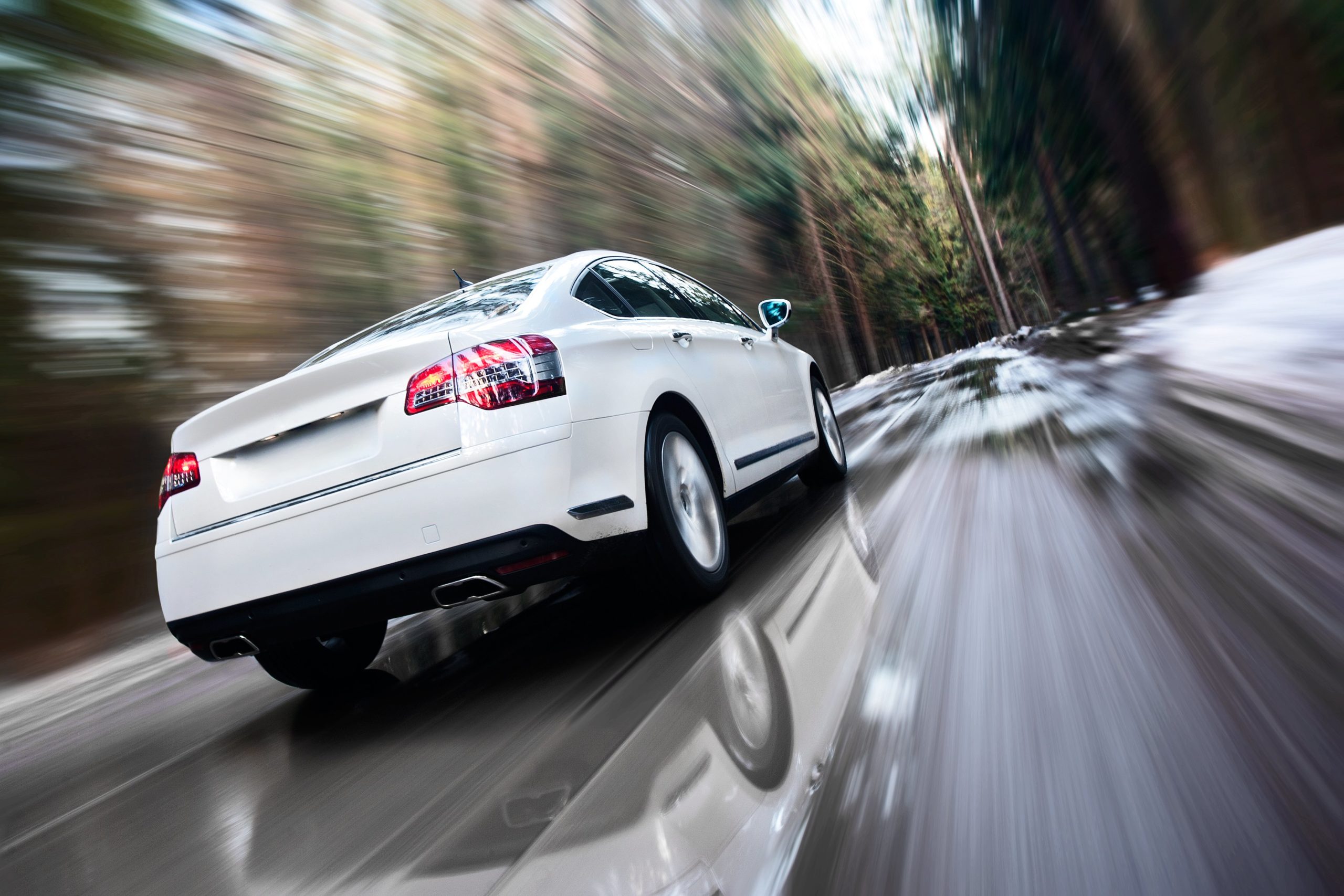
Frequently Asked Questions
What is the difference between four-wheel drive (4WD) and two-wheel drive (2WD) in terms of car insurance rates?
Insurers generally view 4WD vehicles as higher-risk compared to 2WD vehicles, resulting in higher insurance rates for 4WD cars. The complexity and repair costs associated with 4WD systems contribute to the increased premiums.
How does the type of drivetrain affect car insurance rates?
The drivetrain type, such as front-wheel drive (FWD), rear-wheel drive (RWD), or 4WD, can impact insurance rates. 4WD vehicles are usually more expensive to insure due to their repair costs and potential for higher risk.
Are 4×4 vehicles more expensive to insure?
Yes, 4×4 vehicles generally have higher insurance costs. The additional complexity and repair requirements of 4×4 systems contribute to the increased premiums.
How do liability insurance rates differ between 4WD and 2WD vehicles?
Liability insurance rates can differ between 4WD and 2WD vehicles. Factors such as the vehicle’s size, capabilities, and repair costs influence the rates. For example, larger 4WD vehicles like the Jeep Wrangler or Ford F-150 may have higher liability rates compared to smaller 2WD vehicles like the Toyota Camry or Ford Fusion.
How do comprehensive and collision insurance rates differ for 4WD and 2WD vehicles?
Comprehensive and collision insurance rates are generally higher for 4WD vehicles compared to 2WD vehicles. The increased complexity and repair costs associated with 4WD systems contribute to the higher premiums.
Get a FREE Quote in Minutes
Insurance rates change constantly — we help you stay ahead by making it easy to compare top options and save.



